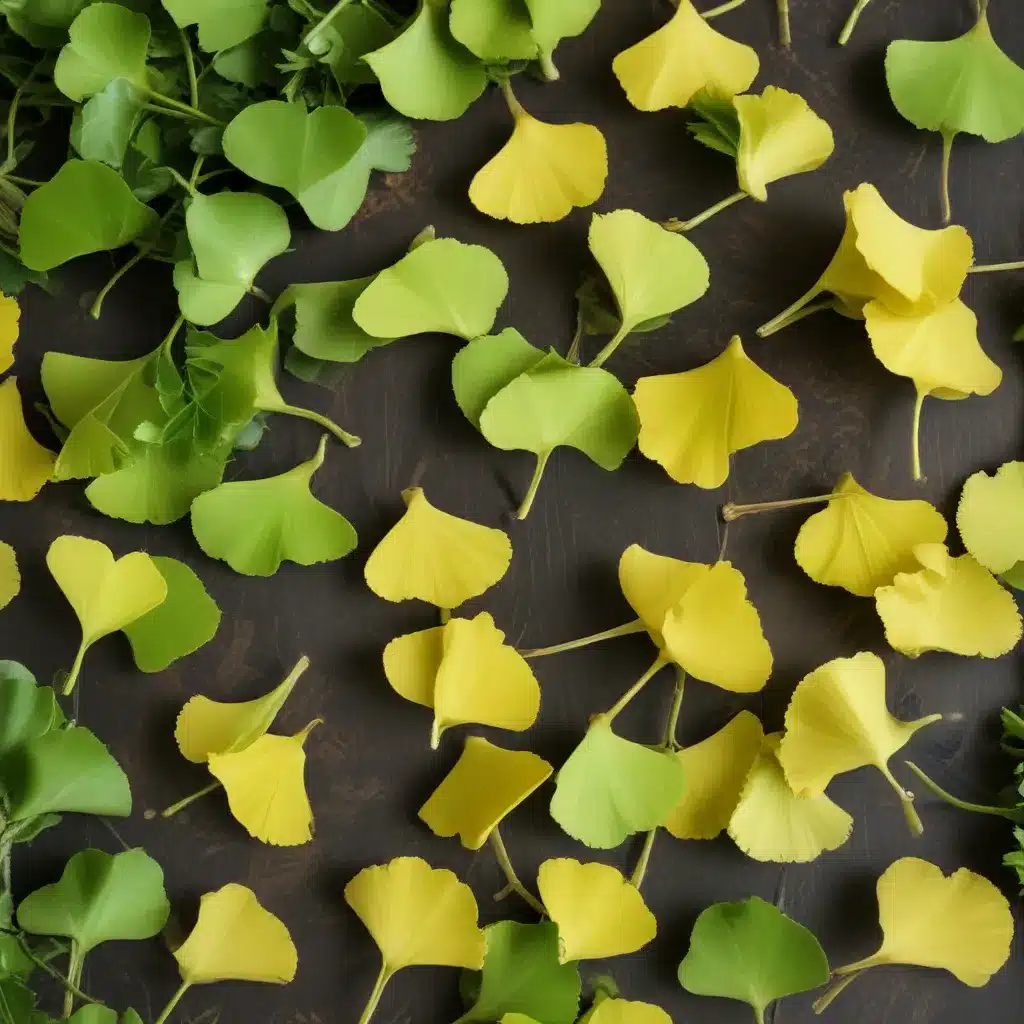
As a tree care specialist at TriCounty Tree Care, I am thrilled to share my insights into the captivating world of the Ginkgo biloba, a living fossil that has captivated the hearts and minds of people for centuries. This ancient and resilient tree, often referred to as the maidenhair tree, boasts a unique charm that makes it a true delight in any landscape.
Botanical Characteristics
The Ginkgo biloba is a deciduous tree that can reach heights of up to 35 meters (115 feet). Its most distinctive feature is the fan-shaped leaves that adorn its branches. These leaves, with their intricate veining patterns, are a true marvel of nature. In the fall, the foliage transforms into a stunning golden hue, creating a breathtaking spectacle that has inspired artists and nature enthusiasts alike.
The reproductive features of the Ginkgo biloba are equally fascinating. This tree has separate male and female trees, with the female trees producing the characteristic fleshy, foul-smelling fruit. To ensure the production of these fruits, it is essential to have a male tree nearby to provide the necessary pollen for pollination.
Historical and Cultural Significance
The Ginkgo biloba’s history can be traced back an astonishing 270 million years, making it one of the oldest living tree species on Earth. This living fossil has witnessed the rise and fall of dinosaurs, and its remarkable resilience has captivated the human imagination for centuries.
In Asian cultures, the Ginkgo biloba holds deep symbolic significance. In China and Japan, it is revered as a symbol of longevity, hope, and resilience. The leaves of the Ginkgo have been used in traditional medicine for centuries, and the tree’s unique appearance has inspired countless works of art and literature.
Environmental Adaptations
One of the most remarkable qualities of the Ginkgo biloba is its ability to thrive in challenging urban environments. These trees are highly tolerant of air pollution and can even withstand the harsh conditions of city streets, making them a popular choice for landscaping projects in urban areas.
The Ginkgo biloba’s hardiness and resilience are also noteworthy. These trees can survive extreme weather conditions, from harsh winters to scorching summers, and they are relatively resistant to pests and diseases. This adaptability has contributed to the Ginkgo biloba’s longevity and widespread distribution across the globe.
Horticultural Considerations
When it comes to cultivating the Ginkgo biloba, it is essential to consider its specific growing requirements. These trees thrive in well-drained soil and prefer full sun, although they can tolerate partial shade. Regular watering during the establishment period is crucial, but once the tree is established, it becomes more drought-tolerant.
The Ginkgo biloba is a versatile tree that can be used in a variety of landscape applications. Its narrow, upright growth habit and vibrant fall foliage make it an excellent choice for street trees, parks, and residential landscapes. Additionally, the Ginkgo’s resistance to pests and diseases and tolerance of urban conditions make it a reliable and low-maintenance addition to any green space.
Medicinal Properties of Ginkgo Biloba
While we won’t delve into the specific health benefits of Ginkgo biloba in this article, it’s important to acknowledge the tree’s potential therapeutic applications. Extracts from the Ginkgo biloba have been studied for their potential to enhance cognitive function, improve cardiovascular health, and provide antioxidant benefits. However, it’s crucial to consult with healthcare professionals before using Ginkgo biloba for medicinal purposes.
Ginkgo Biloba in Ecology
The Ginkgo biloba plays a vital role in the ecosystems it inhabits. As a hardy, long-lived tree, it provides habitat and food sources for a variety of species, including insects, birds, and small mammals. Additionally, the Ginkgo’s ability to thrive in diverse environments makes it an important component of urban green spaces, contributing to improved air quality and mitigating the effects of climate change.
Unfortunately, the Ginkgo biloba is considered endangered in its natural habitat, and conservation efforts are crucial to ensure its continued survival. Organizations around the world are working to protect and reforest Ginkgo populations, recognizing the tree’s immense cultural and ecological value.
Ginkgo Biloba in Human Culture
The Ginkgo biloba has long been a source of inspiration for artists and writers. Its distinctive leaf shape has been depicted in numerous works of art, from traditional Asian paintings to contemporary sculptures. In literature, the Ginkgo has been celebrated for its symbolism of resilience, longevity, and harmony.
Beyond its artistic representations, the Ginkgo biloba also holds spiritual and religious significance in many Asian traditions. In some cultures, the tree is revered for its ability to ward off evil spirits and bring good luck. Ginkgo leaves and seeds have been incorporated into various ceremonial and ritualistic practices throughout history.
As we explore the captivating world of the Ginkgo biloba, it becomes evident that this remarkable tree is not just a botanical marvel but also a testament to the enduring beauty and resilience of nature. Whether you’re admiring its vibrant fall foliage, cultivating it in your landscape, or simply marveling at its ancient lineage, the Ginkgo biloba is a true gem that deserves our appreciation and protection.
If you’re interested in learning more about the Ginkgo biloba or other fascinating tree species, be sure to visit TriCounty Tree Care’s website at www.tricountytreecare.com. Our team of experts is dedicated to providing comprehensive insights and practical guidance to help you care for the trees in your life.


